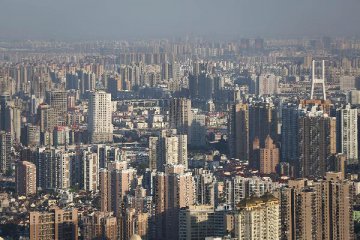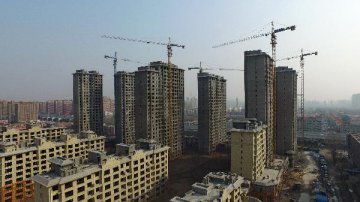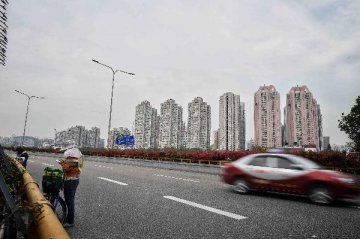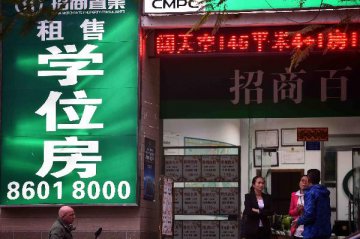 The National Bureau of Statistics (NBS) on July 18 issued “changes of sales prices of urban residential properties in 70 big and medium-sized cities in June 2016”. The report shows that housing prices of the first and second tier cities have raised significantly year on year, while that of third and fourth tier cities remain stable. According to the Q2 macro-economic data released by the NBS a few days ago, throughout the first half year, the year-on-year growth of the real estate industry ranked the top in all the industries.
The National Bureau of Statistics (NBS) on July 18 issued “changes of sales prices of urban residential properties in 70 big and medium-sized cities in June 2016”. The report shows that housing prices of the first and second tier cities have raised significantly year on year, while that of third and fourth tier cities remain stable. According to the Q2 macro-economic data released by the NBS a few days ago, throughout the first half year, the year-on-year growth of the real estate industry ranked the top in all the industries.In the first half year, the surge of housing prices in both the first and second tier cities was a highlight. The soaring housing prices was temporarily curbed after first tier cities like Shanghai and Shenzhen have constantly strengthened policies to restrict home purchase, and some second tier cities accelerated the launch of various macro-adjustment policies, but the 219 “land kings”, namely land parcels for residential purpose with extremely high prices, appeared in the first half year signal the property industry’s judgment on the trend of housing price in the future.
But it should be noted that the overall close rate of the housing market in the first half year was not as satisfying as the same period last year, which means that the dilemma of a lack of home buyers of the third and fourth tier cities is not that a big problem for the first and second tier cities. How will the real estate industry achieve healthy, stable and sustainable development has become a common issue faced by the whole industry.
Housing prices of first tier cites remain at high levels
Second tier cities introduced differentiated policies
In the first half year, Shenzhen and Shanghai were two hot words in the real estate market. In the first quarter, Shenzhen’s housing price had sustained the rising trend in 2015, until new policy was introduced on March 25. Even so, the average prices of new homes in Shenzhen reached 51,006 yuan per square meter as at the end of June 2016, up 16 percent from the end of December last year and increasing by 47.4 percent year on year, according to statistics from CRIC.
Shanghai is another forerunner alongside Shenzhen. In the first quarter, Shanghai’s real estate market also continued the boom at the end of last year, with both sales volume and prices surged. According to data from market research department of Lianjia Shanghai, as of June 30, the average housing price of Shanghai had climbed to 45,411 yuan per square meter. While CRIC’s data shows that in June the price of new residential properties in Shanghai increased by 2.4 percent compared with the previous month, and up 33.7 percent year on year; the price of second-hand homes increased by 2.2 percent from the previous month, and up 30.5 percent year on year. In comparison with Shenzhen and Shanghai, the price hike of Beijing’s residential property was not so eye-catching, but has never stopped.
Among the four first tier cities, the growth of Guangzhou’s home price was moderate. According to statistics from the research institute of Centaline Property, in the first half year, 57,304 new residential units were contracted online in Guangzhou, up 34.6 year on year. Notably, the number of contracts signed in May hit record high. The average housing price of online contracts was 15,599 yuan per square meter, up 6.14 year on year. Despite the growth was not as high as other first tier cities and some popular second tier cities, according to Guangzhou’s progress in cutting housing inventory, prices of new homes in Guangzhou will still gain upsurge momentum in the second half year.
Comparing with first tier cities, some second tier cities witnessed more surprising growth rate of housing price in the first half year. Data from the NBS indicated that in 70 big and medium-sized cities, 57, representing over 80 percent, seen year on year growth of housing prices in June. Particularly, year on year growth of Nanjing City, Xiamen City and Hefei City all exceeds 29 percent, surpassing Beijing and Guangzhou; Hangzhou, Fuzhou, Tianjin and Wuhan also witnessed double digit growth.
The regulators apparently noticed the skyrocketing housing prices of some popular cities in the first half year. On July 14, the National Development and Reform Commission (NDRC) hosted a press conference, at which Zhao Chenxin, deputy director and spokesperson of the policy research office of the NDRC pointed out that in the second half year, government should implement diversified policies according to local market conditions, in order to maintain a steady market. For first and second tier cities, regulators should closely monitor the level of reduction of inventory, increase housing supply and reasonably guiding housing consumption, to prevent housing price from continuous hike at high speed.
Central SOEs among forerunners to purchase land
Overheat of housing market of first and second tier cities is also reflected by land price. The frequent occurrence of “land kings” has attracted attentions from the society. Data provided by research institute of Centaline Property shows that from January to June, 219 “land kings” emerged in 50 major cities, with the total land transferring fees amounted to trillion yuan for the first time, reaching 1,024.3 billion yuan, far beyond 697.3 billion yuan in the same period last year. The turnovers of Hangzhou City, Suzhou City, Nanjing City and Hefei City all recorded year on year growth of more than 200 percent.
Journalist of Shanghai Securities News consolidated data from different sources and found out that as of May 31, in the 105 high-price land parcels with price over 1.5 billion yuan, 52 were acquired by central SOEs. Analysis suggested that central SOEs’ expansion in the housing market is due to their sufficient capital resources. In addition, central SOEs are integrating land business; therefore, some central SOEs rapidly expand the real estate business in a short term to avoid being merged, which pushed up the land prices.
The emergence of land kings has hit record high in both quantities and frequency. For popular cities like Beijing, Shanghai, Shenzhen, Nanjing, Suzhou and Hefei, each land auction would produce a “land king”; the Yangtze River Delta in particular is a cradle for “land kings”, with both the number of “land kings” and housing prices climbing.
“Land king” effect is also strong in Shenzhen. Although turnover pace has rapidly slowed down after “new policy on March 25”, areas for new residential houses in the turnover declined 22.8 percent year on year to 2,429,500 square meters in the first half year of Shenzhen, “land kings” in districts of Longhua and Guangming respectively boost the Shenzhen real estate market again. Due to this and high housing price, average price of new residential houses in Bao’an District sets a new high of 45,625 yuan per square meter.
The constantly increasing land and housing prices force many cities to issue a series of special policies, for example, Nanjing city take moves to limit the price for land transfer. Some market insiders believed that although price limit measures could restrict the excessively growth of land price in a short term, it is not a long-term policy. Increasing residential lands and fully opening the land market are urgent now. The first and second tier cities should be approved with more residential lands to ease the control and restriction on plot ratio and building height in the central urban areas, especially the residential land market.
De-stock trend slightly turns good, third and fourth tier cities make promises
The first and second tier cities are pushed so hard by over-rapidly reduced inventory and fast growing housing price, while the third and fourth tier cities concern on how to reduce their inventories within an acceptable range under the background of de-stock.
Luoyang city, having been the capital of nice ancient dynasties, has its industrial output and population just less than Zhengzhou in Henan province, but de-stock is a big and old problem, which is also a epitome for most of the third and fourth tier cities when facing destock in the real estate market. Local government once analyzed the reasons that, on one hand, real estate investment rapidly increased in the past years, and step into concentrated sales period in recent years, facing obviously unbalanced supply and demand; on the other hand, Luoyang’s regional deployment is not reasonable, and many residential houses are built in areas with supporting facilities not meeting living demands.
Local governments have issued massive policies based detailed situations to speed up the de-stock work in the real estate market. Zhejiang province proposes to deal with the residential houses going to sell in 2017 within 10 to 16 months. Although the target period proposed by Zhejiang is the next year, de-stock work of the province still faces fierce trend, as besides cities like Hangzhou and Ningbo, the third and fourth tier cities in Zhejiang are under big de-stock pressure, even requiring over 30 months. In order to achieve the goal, Zhejiang, always setting high standards for household settlement, now issues a “killing” measure: it comprehensively cancel the restrictions on housing purchasing for household settlement in counties (cities), and lower the thresholds, such as building area and capital amount, for urban household settlement through house purchasing, expect Hangzhou.
Real estate market may step in adjustment again, credit policies influence future market
Based on complicated real estate market in the first half year, the trend of the second half year attracts much attention. Recently, National Academy of Economics Strategy and City and Competitiveness Research Center under the CASS have jointly issued Mid-2016 China Housing Report, which predicts an overall rebound in current real estate market, possible fallback in growth rate from the second half year of this year to the second quarter of 2017, as well as slowing down growth rate of real estate investment.
Regulators even keep a closer eye on future trend to this respect. Chen Zhenggao, Minster of Housing and Urban-Rural Development, on July 18 hosted a meeting himself, having chairmen of six large real estate enterprises, including China Vanke Co., Ltd. (000002.SZ), Sunac China Holdings Limited, Evergrande Group, Country Garden Holdings Co. Ltd., Poly Real Estate Group Co., Ltd. (600048.SH) and Greenland Holdings Corporation Limited (600606.SH), involved to know about the real estate market in 2016, land market, de-stock pressure and inventor in particular, so as to support policy adjustment in next step.
We should notice that financial and monetary policies of the central bank will influence the housing price in the second half year. Based on financial data of May issued by the central bank, the M2 increased 11.8 percent year on year in May 2016, down by 1 percentage point month on month, strongly different from 13.4 percent in March. Meanwhile, the banks’ interest rate for housing loan straightly went down in the first half year. Insiders pointed out that, along with new policies to reduce the down payment, housing loan scope gradually expands, and banks start to consider the high-leverage risk brought by low interest rate and down payment; policies related to the housing loan of banks are expected to gradually stabilize in the second half year; banks will attract more high-quality clients to apply for housing loans through detailing preferential interest rate and down payment threshold, so that to reduce the financial risks.
In terms of financial risks caused by high leverage, The Xinhua News Agency reported on July 20 that this round of housing price surge in some cities are more related to financial leverage, excessive leverage will certainly trigger price bubbles to bring in risks for real estate market, financial system, or even the whole economy.
It is worthy to notice that M2 growth rate has constantly dropped for two months to 11.8 percent since “authoritative insiders” totally denied the moves for de-stock through high leverage, which sets a new low in the latest year. After constant declines for two months, newly added credit loans dropped to 555.6 and 985.5 billion yuan respectively from 1.37 trillion yuan in March. In the second half year, changes in credit loan input policy will possibly be the main factor to determine the market trend.
Translated by Adam and Jelly























Latest comments